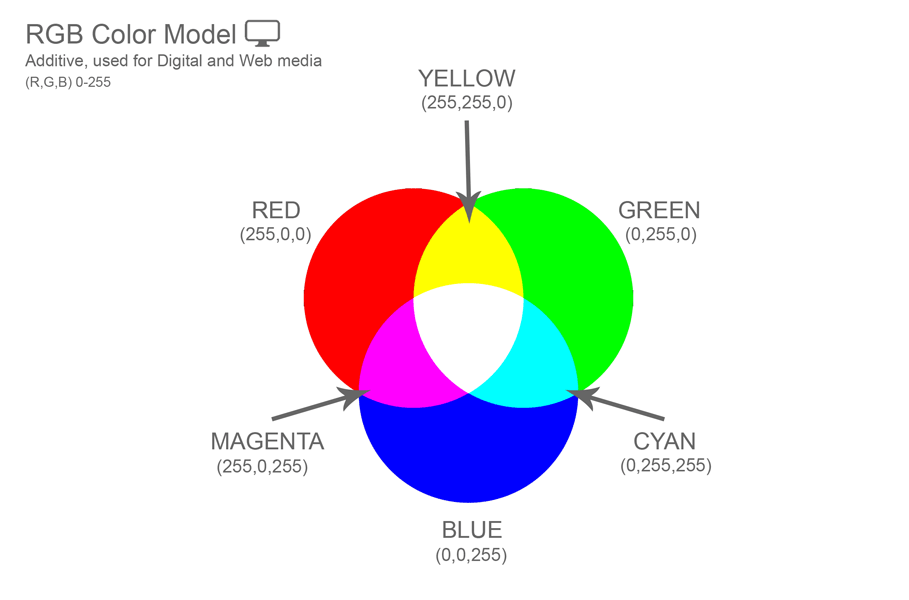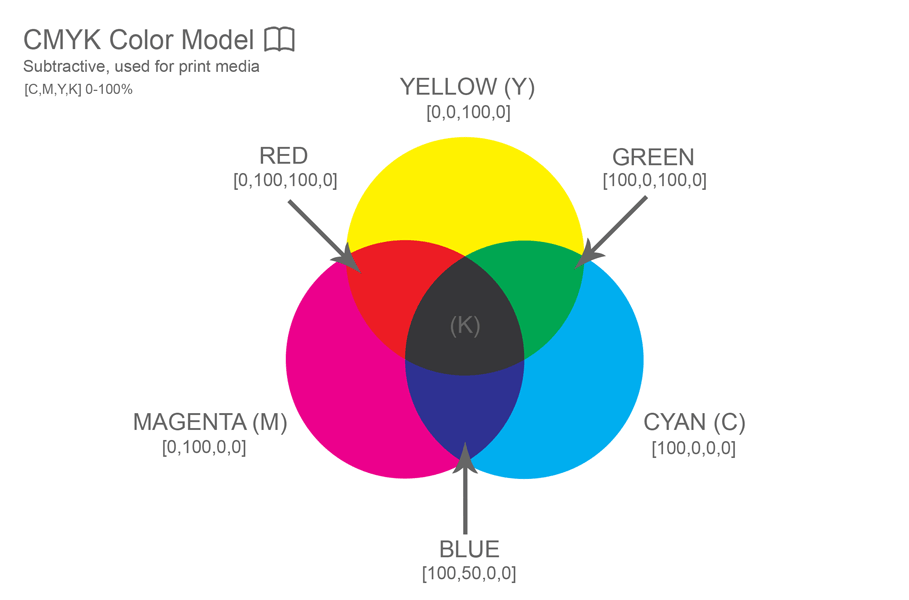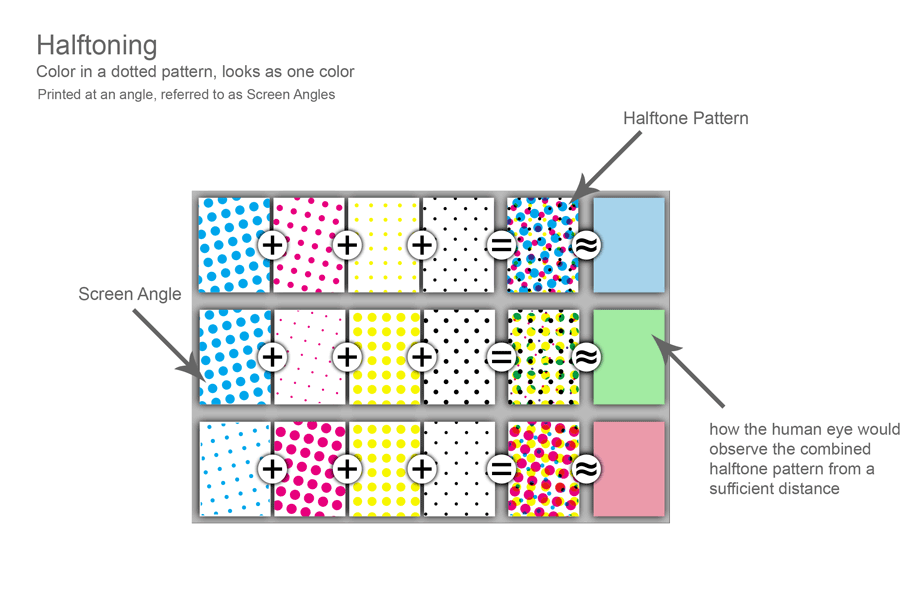Color Models Explained
In the digital imaging industry, colors are represented by using what is known as a color model. A color model is simply a combination of few colors blended together to create multiple colors. In this article we will briefly examine the two most common color models: RGB and CMYK.
The RGB Color Model
This particular color model theory is based on the natural human perception of colors. The RGB color model is an additive color model which means that it adds red, green, and blue light together in various ways to reproduce its colors.
The main purpose of the RGB color model is used for representing colors in electronic devices such as televisions, computer models, and portables.

RGB Triplet
In the RGB model, a single color is described by indicating how much of each primary color is to be included; this is called an RGB triplet. An RGB triplet has three values which can vary from zero to maximum and is written as (R,G,B).
If all the components are at zero the result is black; if all are at maximum the result is the brightest possible white. The ranges of these values can be quantified in various ways but the most common used in computing is an integer number ranging from 0-255.
The CMYK Color Model
Also known as four color or process color, this model is a subtractive color model which means it masks certain colors partially or entirely to subtract brightness from white. The name CMYK refers to the four ink colors used in most color printing which are Cyan, Magenta, Yellow, and Key (Black).
The CMYK color model is most commonly used for printing applications such as product packaging.

The reason why black is separately used for varies, but the main reason is the black that is produced from mixing the three primary process colors often becomes more of a dark brown color that does not appear as black.
Halftoning
In order for CMYK to produce a full continuous range of colors it must use a technique known as halftoning. Sometimes referred to as screening, halftoning allows for less than full saturation of the primary colors by printing the color in a dotted pattern that is small enough that the human eye will perceive it as one color; the closer the dots, the more saturated the color becomes.

Without halftoning, the three primary process colors could only be printed as a solid color (full saturation) and would result in only being able to create 7 total colors. To further improve print quality halftone patters are almost always printed at an angle, referred to as Screen Angles. This technique works by reducing parallel patterns which lead to color interference and other undesirable printing results.
CcMmYK
Some inkjet printers use an extension of the color model called CcMmYK which is a six color printing process that simply adds light cyan (c) and light magenta (m). This extension is most commonly used in printers optimized for photo printing to remove undesirable halftoning results.
You May Also Like
- Domain Forwarding 101: Everything You Need to Know to Get Started
- How to Install Docker CE on CentOS 7/8 with CWP, cPanel, or Plesk
- How to Install Composer in CWP, Vesta, cPanel, and Plesk on CentOS/Ubuntu
- Get More Website Conversions with These 10 Must-Have Landing Page Elements
- How to Enable GZIP Compression on a Linux Server Running Apache
